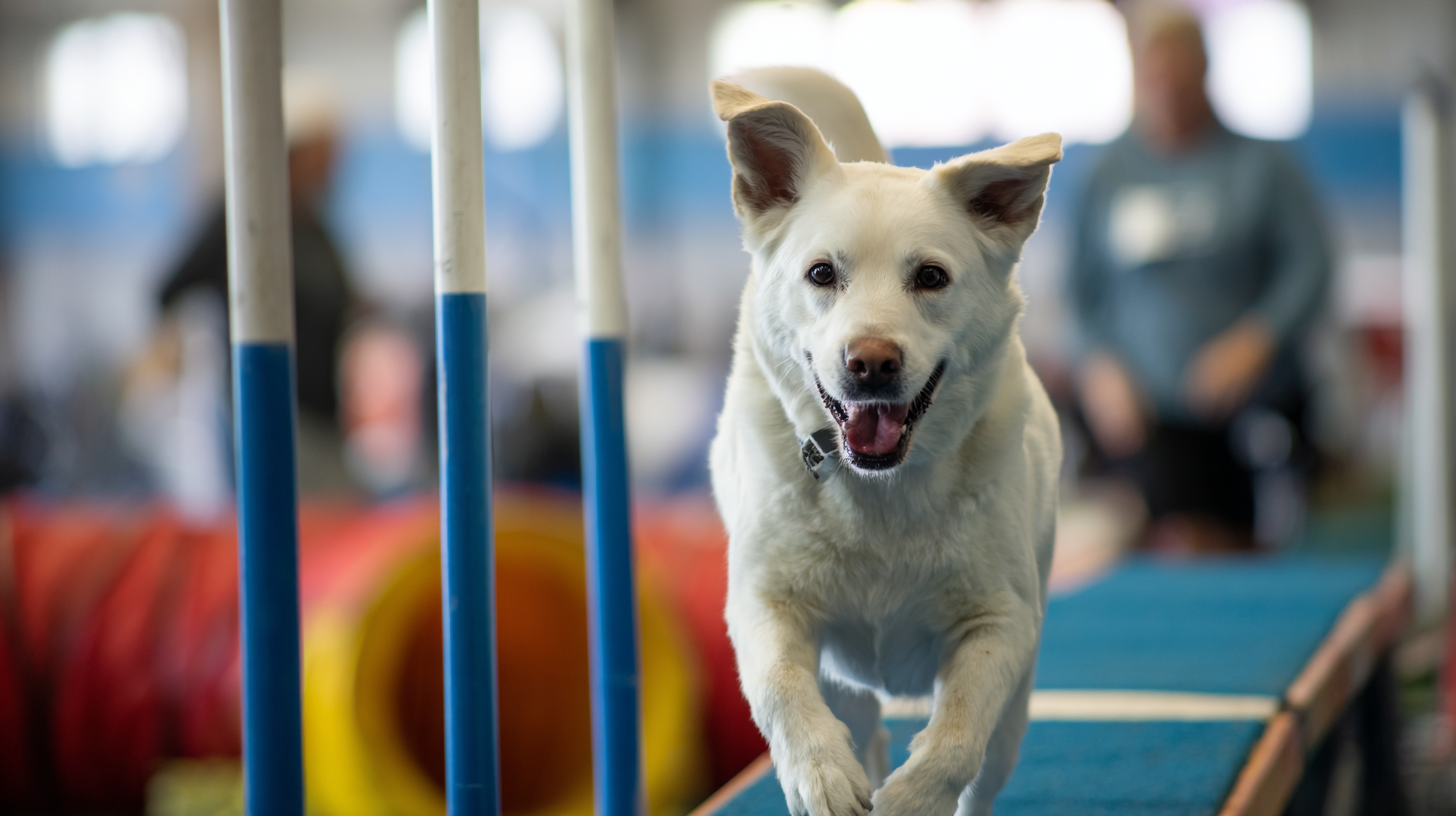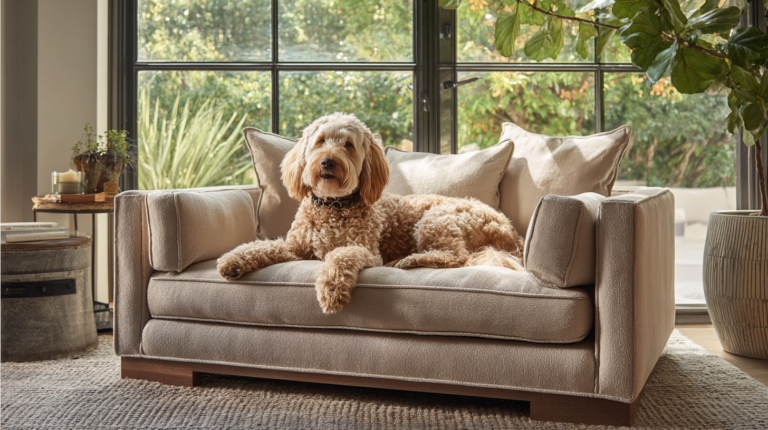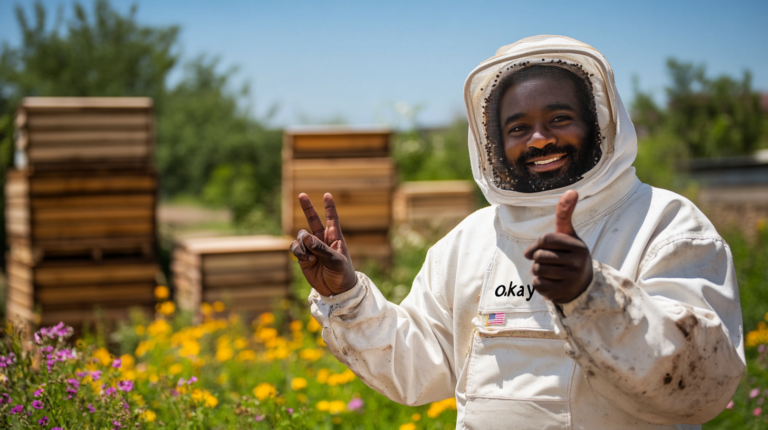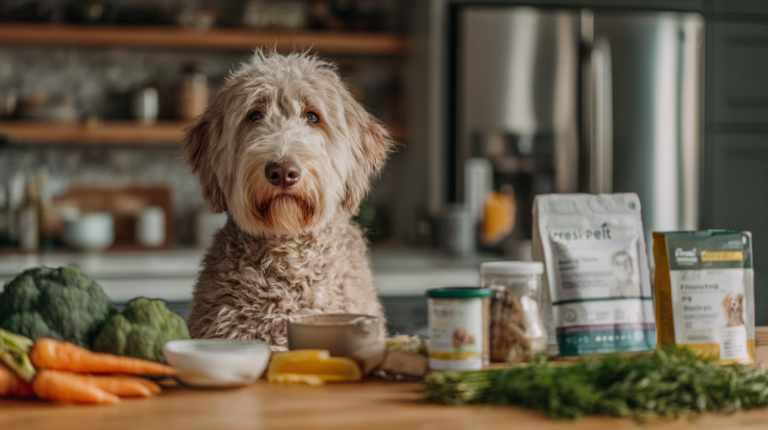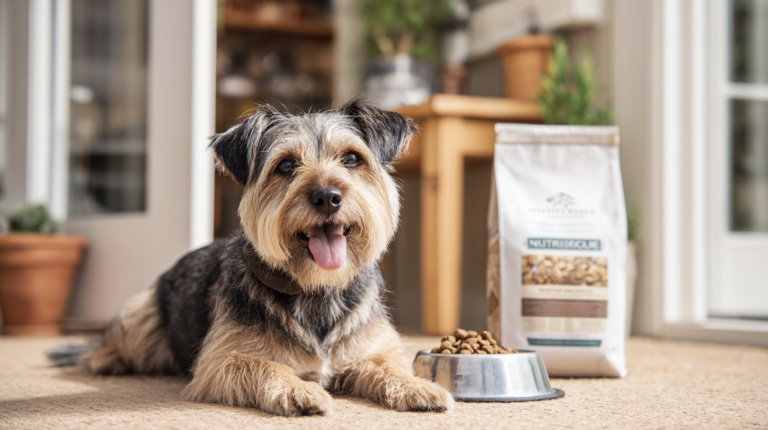Discover the 10 best dog agility training near me options. Expert tips, local facilities, and everything you need to start your dog’s agility journey today.
Did you know that over 3.2 million dogs participate in agility training across the United States each year? If you’ve been searching for “dog agility training near me,” you’re joining a rapidly growing community of pet owners who want to strengthen their bond with their furry companions while keeping them physically and mentally stimulated.
Dog agility training offers incredible benefits for both you and your four-legged friend. From improved obedience and increased confidence to enhanced physical fitness and mental sharpness, agility training transforms ordinary dogs into athletic superstars. Whether you’re a first-time dog owner or an experienced handler looking to take your pet’s skills to the next level, finding the right local agility training program is crucial for success.
In this comprehensive guide, we’ll explore the top 10 types of dog agility training facilities you should consider, what to look for when choosing a program, and expert tips to help you and your dog excel in this exciting sport. By the end of this article, you’ll have all the information needed to make an informed decision about the best dog agility training options in your area.
Understanding Dog Agility Training Fundamentals
Table of Contents
Before diving into specific training options, it’s essential to understand what dog agility training entails. Agility training is a competitive sport where dogs navigate through a timed obstacle course under the guidance of their handlers. The obstacles typically include jumps, tunnels, weave poles, A-frames, dog walks, and seesaws.
The primary goals of agility training extend far beyond competition. Most dogs benefit from improved focus, enhanced problem-solving abilities, and increased confidence. Additionally, the physical exercise helps maintain healthy weight and muscle tone while providing mental stimulation that can reduce behavioral issues like excessive barking or destructive chewing.
Professional agility trainers emphasize that successful programs focus on positive reinforcement techniques. Dogs learn best when they associate training with fun, treats, and praise rather than correction or punishment. This approach builds trust between handler and dog while maintaining the dog’s natural enthusiasm for learning.
Top 10 Types of Dog Agility Training Facilities to Consider
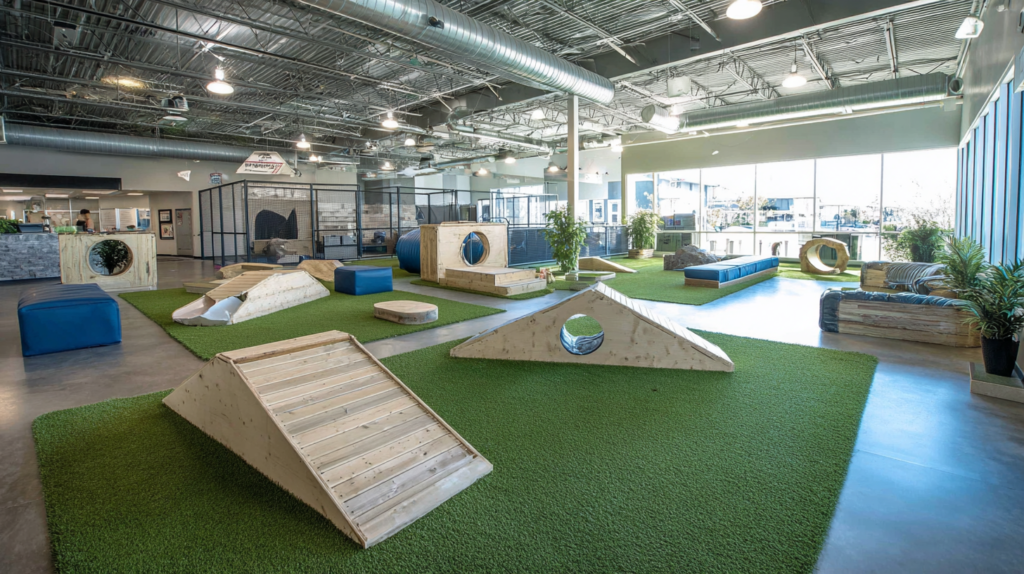
1. Professional Agility Training Centers
Dedicated agility training facilities offer the most comprehensive programs for serious handlers. These centers typically feature full-sized regulation equipment, experienced instructors, and structured class progressions from beginner to advanced levels.
What sets professional centers apart is their commitment to proper technique and safety. Instructors hold certifications from recognized organizations like the United States Dog Agility Association (USDAA) or the American Kennel Club (AKC). They understand canine biomechanics and can spot potential issues before they become problems.
When evaluating professional centers, look for facilities that maintain their equipment regularly and prioritize safety protocols. The best centers also offer trial classes so you can assess whether their teaching style matches your learning preferences.
2. Local Dog Training Schools with Agility Programs
Many traditional dog training schools have expanded their offerings to include agility classes. These facilities often provide a more affordable entry point into the sport while maintaining quality instruction.
The advantage of choosing a training school is the ability to progress from basic obedience to advanced agility within the same facility. This continuity helps build stronger relationships with instructors who understand your dog’s specific needs and learning style.
Training schools typically offer smaller class sizes than larger facilities, allowing for more personalized attention. However, their equipment may be more basic compared to dedicated agility centers.
3. Veterinary Clinics Offering Agility Programs
Some progressive veterinary clinics have added agility training to their services, recognizing the health benefits for dogs. These programs often emphasize the therapeutic aspects of agility training, making them ideal for dogs recovering from injuries or dealing with anxiety issues.
Veterinary-based programs typically maintain the highest safety standards and can immediately address any health concerns that arise during training. They’re particularly valuable for senior dogs or those with mild physical limitations who can still benefit from modified agility exercises.
4. Community Recreation Centers
Many community recreation centers now offer dog agility classes as part of their programming. These facilities provide excellent value for money and often have flexible scheduling options that accommodate working pet owners.
Community centers typically partner with local certified trainers to deliver quality instruction. While their equipment may be portable rather than permanent, many programs maintain high standards and offer progression from beginner to intermediate levels.
The social aspect of community center classes can be particularly beneficial. You’ll meet other local dog owners and potentially form training partnerships that extend beyond formal classes.
5. Private Agility Instructors
For personalized attention and flexible scheduling, private agility instructors offer unmatched value. These trainers typically work with you and your dog either at their private facility or even in your backyard with portable equipment.
Private instruction allows for customized training plans that address your dog’s specific strengths and challenges. This approach is particularly effective for dogs with behavioral issues or those who become overwhelmed in group settings.
The investment in private training often pays dividends in faster progress and more refined skills. However, costs are typically higher than group classes, and you miss the socialization benefits of training with other dogs.
6. Dog Sports Clubs and Organizations
Local dog sports clubs often offer agility training as part of their member benefits. These organizations typically focus on competitive aspects of the sport and may be ideal for handlers with competitive aspirations.
Club training often provides access to experienced competitors who can share insights about trial preparation and handling strategies. Many clubs also host fun matches and local competitions that provide valuable experience in a supportive environment.
Membership fees for clubs are often reasonable, and the community aspect provides ongoing motivation and support for both new and experienced handlers.
7. Pet Store Training Programs
Major pet retailers like Petco and PetSmart have expanded their training offerings to include agility classes. These programs provide convenient locations and standardized curricula that ensure consistent quality across different locations.
Pet store programs often use positive reinforcement techniques and certified trainers. They’re particularly good for beginners who want to explore agility training without making a significant financial commitment.
The equipment used in pet store programs is typically safe and appropriate for learning, though it may be more basic than what you’d find at dedicated facilities.
8. 4-H Clubs and Youth Programs
For families with children, 4-H clubs offer excellent agility training opportunities that involve the whole family. These programs emphasize responsibility, sportsmanship, and animal care alongside agility skills.
4-H programs often provide access to experienced mentors and opportunities to participate in county and state competitions. The focus on youth development creates a supportive environment that builds confidence in both young handlers and their dogs.
Many 4-H clubs welcome adult participation as volunteers or co-handlers, making this option suitable for families who want to share the agility experience.
9. Online Training Programs with Local Support
The rise of online learning has created new opportunities for agility training. Some programs combine online instruction with local practice groups or occasional in-person sessions.
Online programs offer flexibility for busy schedules and often provide access to world-class instructors who might not be available locally. However, they require more self-discipline and may not be suitable for dogs who need extensive socialization.
The best online programs provide detailed video instruction, equipment recommendations, and access to online communities for support and advice.
10. Breed-Specific Training Groups
Some dog breeds have specific agility training groups that focus on the unique characteristics and needs of particular breeds. These groups understand breed-specific challenges and can provide targeted training strategies.
Breed-specific groups often have strong social components and may organize breed-specific competitions or fun events. They’re particularly valuable for breeds that require specialized handling techniques or have specific physical considerations.
Essential Features to Look for in Dog Agility Training Programs
When evaluating dog agility training near me options, certain features distinguish excellent programs from mediocre ones. Understanding these key elements will help you make an informed decision that benefits both you and your dog.
Qualified Instructors and Certifications
The most crucial factor in selecting an agility training program is instructor qualification. Look for trainers who hold certifications from recognized organizations such as the AKC, USDAA, or NADAC (North American Dog Agility Council). These certifications ensure that instructors understand proper training techniques, safety protocols, and canine learning theory.
Experienced instructors should be able to explain their training philosophy and demonstrate how they modify techniques for different dogs and skill levels. They should also be willing to provide references from previous students and maintain ongoing education through workshops and seminars.
Safety Protocols and Equipment Standards
Safety should be the top priority in any agility program. Quality facilities maintain their equipment regularly, inspect it for wear and damage, and replace items as needed. The training area should be properly surfaced to provide good traction while minimizing injury risk.
Reputable programs establish clear safety rules and enforce them consistently. This includes requirements for vaccinations, health checks, and appropriate behavior from both dogs and handlers. The best programs also carry liability insurance and require participants to sign waivers that demonstrate their commitment to safety.
Progressive Training Methodology
Effective agility programs use progressive training methods that build skills systematically. Beginning classes should focus on basic obedience, body awareness, and simple obstacles before advancing to complex sequences and timing challenges.
Look for programs that assess each dog’s progress individually rather than moving entire classes forward at the same pace. Dogs learn at different rates, and good programs accommodate these differences while maintaining appropriate challenge levels.
Positive Reinforcement Techniques
Modern agility training relies heavily on positive reinforcement methods that build confidence and enthusiasm. Avoid programs that use punishment-based techniques or recommend equipment like shock collars or prong collars for agility training.
The best programs teach handlers how to use treats, toys, and praise effectively to motivate their dogs. Instructors should demonstrate these techniques clearly and help handlers develop timing and consistency in their reward systems.
Getting Started: What to Expect in Your First Agility Class
Starting your agility journey can feel overwhelming, but understanding what to expect in your first class will help you prepare effectively. Most beginner programs follow a similar structure that introduces basic concepts while ensuring safety and enjoyment for all participants.
Pre-Class Preparation
Before attending your first class, contact the facility to understand their specific requirements. Most programs require proof of current vaccinations, including rabies, DHPP, and bordetella. Some facilities also require a negative fecal examination within the past year.
Prepare a bag with essential supplies including high-value treats, a water bowl, towels for cleanup, and any required paperwork. Dress in comfortable, non-restrictive clothing and wear shoes with good traction. Avoid loose jewelry or clothing that might catch on equipment.
Initial Assessment and Goal Setting
Quality programs begin with an assessment of your dog’s current abilities and your goals for training. Instructors will evaluate your dog’s basic obedience skills, attention span, and comfort level around other dogs and people.
This assessment helps instructors customize their approach and set realistic expectations for progress. Be honest about your dog’s strengths and challenges, as this information helps instructors provide more effective guidance.
Introduction to Basic Equipment
First classes typically introduce dogs to basic agility equipment in a non-threatening way. Dogs learn to walk through low jumps, explore tunnels, and navigate simple obstacles at their own pace.
Instructors emphasize that early training focuses on building confidence rather than performance. Dogs should associate agility equipment with positive experiences, so forcing or rushing is counterproductive.
Handler Education and Positioning
While dogs are learning about equipment, handlers learn about proper positioning, movement, and communication techniques. Agility is a team sport, and handlers must understand their role in guiding their dogs through courses.
Early lessons cover basic handling positions, how to use body language effectively, and timing of rewards and commands. These skills are as important as the dog’s ability to navigate obstacles.
Common Mistakes to Avoid When Starting Agility Training
Even well-intentioned pet owners can make mistakes that hinder their dog’s progress or create safety risks. Understanding these common pitfalls will help you avoid them and ensure a positive training experience.
Rushing the Training Process
One of the most common mistakes is trying to progress too quickly through training levels. Dogs need time to build confidence and muscle memory for each skill before moving to more complex challenges.
Rushing often leads to dogs developing bad habits or becoming stressed about training. Quality programs emphasize that taking time to build solid foundations ultimately leads to better performance and more enjoyment for both dog and handler.
Inconsistent Training and Practice
Agility skills require regular practice to maintain and improve. Dogs that only practice during weekly classes often struggle to retain skills and may become frustrated when they can’t remember previous lessons.
Successful agility teams practice basic skills at home using improvised equipment or simple exercises. Even 10-15 minutes of daily practice can significantly improve progress and strengthen the bond between dog and handler.
Ignoring Physical Limitations
Not all dogs are suited for competitive agility, and pushing dogs beyond their physical capabilities can lead to injury or stress. Factors like age, size, joint health, and overall fitness should influence training decisions.
Reputable instructors will help you assess your dog’s suitability for agility and recommend modifications when necessary. The goal is enjoyment and fitness rather than competition for most dogs.
Focusing Only on Speed and Competition
While agility is a timed sport, beginning handlers often focus too much on speed rather than accuracy and communication. This approach can lead to dogs who rush through courses without paying attention to their handlers.
The best training programs emphasize that speed develops naturally as dogs become more confident and skilled. Focus on clear communication and accurate performance rather than rushing through obstacles.
Health and Safety Considerations for Agility Training
Agility training provides excellent exercise and mental stimulation, but it also involves physical demands that require careful consideration. Understanding potential risks and how to minimize them ensures a safe and enjoyable experience for your dog.
Physical Conditioning and Preparation
Dogs need adequate physical conditioning before beginning agility training, just like human athletes. This includes building core strength, improving flexibility, and developing cardiovascular fitness through regular exercise.
Many agility-related injuries occur because dogs attempt obstacles before they’re physically prepared. A gradual conditioning program that includes walking, swimming, and basic strength exercises helps prepare dogs for the demands of agility training.
Age-Appropriate Training Modifications
Puppies under 12-18 months should not jump at full height or perform high-impact activities that could damage developing joints. Quality programs offer puppy agility classes that focus on basic skills and body awareness using modified equipment.
Senior dogs can often continue agility training with appropriate modifications. Lower jump heights, softer surfaces, and shorter training sessions help older dogs maintain fitness while reducing injury risk.
Injury Prevention and Recognition
Common agility injuries include soft tissue strains, joint sprains, and overuse injuries. Learning to recognize early signs of discomfort or lameness helps prevent minor issues from becoming serious problems.
Regular veterinary checkups become even more important for agility dogs. Discuss your dog’s training activities with your veterinarian and report any changes in movement or behavior promptly.
Environmental Safety Factors
Training environments should be evaluated for potential hazards including poor footing, extreme temperatures, and overcrowding. Indoor facilities should have adequate ventilation and temperature control.
Outdoor training requires consideration of weather conditions, ground surfaces, and potential distractions. Hot weather and hard surfaces increase injury risk and require modifications to training intensity and duration.
Building a Strong Foundation: Essential Skills for Success
Successful agility training builds upon fundamental skills that create a strong foundation for advanced work. These basic competencies benefit all dogs, whether they’re destined for competition or simply enjoying agility as a recreational activity.
Attention and Focus Development
The ability to maintain attention and focus despite distractions is crucial for agility success. Dogs must learn to ignore other dogs, people, and environmental stimuli while concentrating on their handler’s directions.
Attention training begins with simple exercises in controlled environments and gradually increases difficulty by adding distractions. Games like “watch me” and “find me” help develop the focused attention needed for agility work.
Body Awareness and Coordination
Many pet dogs have limited body awareness and coordination, especially if they’ve lived relatively sedentary lives. Agility training requires dogs to understand where their feet are and how to move their bodies precisely.
Exercises like walking over cavaletti poles, backing up on command, and targeting specific body parts help develop the body awareness needed for complex agility maneuvers.
Impulse Control and Self-Regulation
Agility requires dogs to control their impulses and wait for appropriate cues from their handlers. This includes staying in position at start lines, stopping at contact zones, and maintaining control despite excitement.
Impulse control training uses exercises like “wait” commands, stays of varying duration, and controlled release techniques. These skills transfer directly to agility performance and create more reliable, safe dogs.
Handler-Dog Communication
Clear communication between handler and dog is essential for agility success. Dogs must learn to respond to both verbal cues and body language signals from their handlers.
Communication training includes establishing consistent vocabulary, teaching directional commands, and helping dogs understand handler movement patterns. This foundation makes complex agility sequences possible.
Advanced Training Techniques and Competitive Preparation
For teams interested in pursuing competitive agility, advanced training techniques help develop the precision and speed needed for success. These methods build upon basic skills while introducing more complex challenges.
Sequence Training and Course Navigation
Advanced training focuses on linking individual obstacles into flowing sequences that simulate competition courses. Dogs learn to maintain speed and accuracy while navigating complex patterns.
Sequence training typically begins with simple two or three obstacle combinations and gradually increases complexity. Handlers learn to plan their movements and positioning to guide dogs smoothly through courses.
Distance Handling and Independence
Competitive agility often requires handlers to direct their dogs from a distance, necessitating strong independence and confidence from the dog. Training for distance work begins with simple exercises and gradually increases the space between handler and dog.
Distance skills include sending dogs to specific obstacles, maintaining direction changes without close handler proximity, and stopping or starting on command from across the ring.
Speed and Accuracy Balance
Advanced teams must balance speed with accuracy, as both factors contribute to competitive success. Training techniques help dogs maintain enthusiasm and drive while performing obstacles correctly.
Speed training includes exercises that build drive and motivation while accuracy training focuses on precise performance of individual obstacles. The best programs help teams find the optimal balance for their specific partnership.
Mental Preparation and Stress Management
Competitive agility can be stressful for both dogs and handlers. Advanced training includes techniques for managing performance anxiety and maintaining focus under pressure.
Mental preparation includes desensitization to trial environments, stress reduction techniques, and building confidence through positive experiences. Many successful teams use visualization and relaxation techniques adapted from human sports psychology.
Troubleshooting Common Training Challenges
Even with excellent instruction and dedicated practice, most agility teams encounter challenges during their training journey. Understanding how to address common problems helps maintain progress and enjoyment.
Lack of Motivation and Enthusiasm
Some dogs initially show little interest in agility training or lose enthusiasm over time. This challenge requires careful analysis of training methods and motivation strategies.
Solutions may include changing reward types, reducing training intensity, or addressing underlying stress or discomfort. Sometimes dogs need more time to build confidence before showing enthusiasm for challenging obstacles.
Fear or Anxiety Around Specific Obstacles
Many dogs develop fears around specific obstacles, particularly those that require height or unusual movement patterns. These fears require patient, systematic desensitization work.
Successful fear resolution typically involves breaking obstacles into smaller components, using high-value rewards, and allowing dogs to progress at their own pace. Forcing fearful dogs rarely produces lasting solutions.
Handler Consistency and Timing Issues
Handler errors are often responsible for training problems, particularly inconsistent cuing or poor timing of rewards. Video analysis can help identify these issues.
Improving handler skills often requires focused practice on specific techniques, working with experienced instructors, and sometimes taking breaks from training to work on fundamental handling skills.
Plateau Periods and Lack of Progress
Most agility teams experience periods where progress seems to stagnate. These plateaus are normal but can be frustrating for eager handlers.
Breaking through plateaus often requires changing training approaches, seeking input from different instructors, or taking short breaks to prevent burnout. Sometimes dogs need time to mentally process new skills before demonstrating improvement.
Educational Table
Markdown Version:
| Training Facility Type | Average Cost | Best For | Equipment Quality | Class Size | Pros | Cons |
|---|---|---|---|---|---|---|
| Professional Agility Centers | $25-40/class | Serious competitors | Excellent | 4-8 dogs | Expert instruction, full equipment | Higher cost, may intimidate beginners |
| Dog Training Schools | $20-30/class | Beginners to intermediate | Good | 6-10 dogs | Progression from basic to advanced | Limited specialized equipment |
| Veterinary Clinics | $30-45/class | Dogs with health concerns | Excellent | 3-6 dogs | Highest safety standards | Limited availability, higher cost |
| Community Centers | $15-25/class | Budget-conscious owners | Fair to Good | 8-12 dogs | Affordable, social environment | Portable equipment, less specialized |
| Private Instructors | $50-100/hour | Customized training needs | Varies | 1-on-1 | Personalized attention, flexible | Expensive, less socialization |
| Dog Sports Clubs | $10-20/class | Competition-focused | Good | 6-10 dogs | Knowledgeable community, affordable | May require membership |
| Pet Store Programs | $20-30/class | Beginners, convenience | Fair | 6-8 dogs | Convenient locations, standardized | Basic equipment, limited progression |
FAQ Section
Q: How do I find the best dog agility training near me? A: Start by searching online for local agility clubs, dog training facilities, and community programs. Read reviews, visit facilities, and ask about instructor certifications. Most quality programs offer trial classes so you can evaluate their teaching style and facility before committing.
Q: What age should my dog be to start agility training? A: Puppies can begin foundation skills and body awareness exercises as early as 12-16 weeks old, but should not jump at full height until their growth plates close (12-18 months for most breeds). Adult dogs of any age can start agility training with appropriate modifications.
Q: How much does dog agility training typically cost? A: Costs vary significantly by location and program type. Group classes typically range from $15-40 per session, while private lessons may cost $50-100 per hour. Many facilities offer package deals or membership discounts that reduce per-session costs.
Q: What equipment do I need to start agility training? A: Initially, you’ll only need high-value treats, a water bowl, and appropriate clothing. Training facilities provide all agility equipment. As you progress, you may want to purchase basic equipment for home practice, starting with items like jump poles and tunnel segments.
Q: Can any dog breed participate in agility training? A: While any healthy dog can enjoy agility training, some breeds are naturally better suited for competitive agility. Border Collies, Australian Shepherds, and Jack Russell Terriers often excel, but mixed breeds and other purebreds can also be successful with proper training.
Q: How long does it take to see progress in agility training? A: Most dogs show basic progress within 4-6 weeks of consistent training. However, developing reliable agility skills typically takes 6-12 months of regular practice. Progress varies significantly based on the dog’s age, temperament, and previous training experience.
Q: Is agility training safe for senior dogs? A: Senior dogs can often participate in modified agility training with veterinary approval. Modifications may include lower jump heights, softer surfaces, and shorter training sessions. The mental stimulation and gentle exercise can be beneficial for older dogs when properly adapted.
Conclusion
Finding the right dog agility training near me requires careful consideration of your dog’s needs, your goals, and the quality of available programs. Whether you choose a professional agility center, community program, or private instructor, the most important factors are qualified instruction, safe facilities, and positive training methods.
Remember that agility training is a journey that requires patience, consistency, and commitment from both you and your dog. Start with realistic expectations, focus on building a strong foundation, and celebrate small victories along the way. The bond you’ll develop with your dog through agility training is one of the most rewarding aspects of this exciting sport.
The benefits of agility training extend far beyond the training ring. Dogs who participate in agility programs often show improved confidence, better behavior, and stronger relationships with their owners. Whether your goal is competitive success or simply having fun with your furry friend, agility training offers something valuable for every dog-owner team.
For more expert pet care tips and product recommendations, visit BlithePet.com your trusted source for pet wellness.
Have a similar experience with your pet? Share it in the comments below! Don’t forget to check out our other helpful guides at BlithePet.com.

